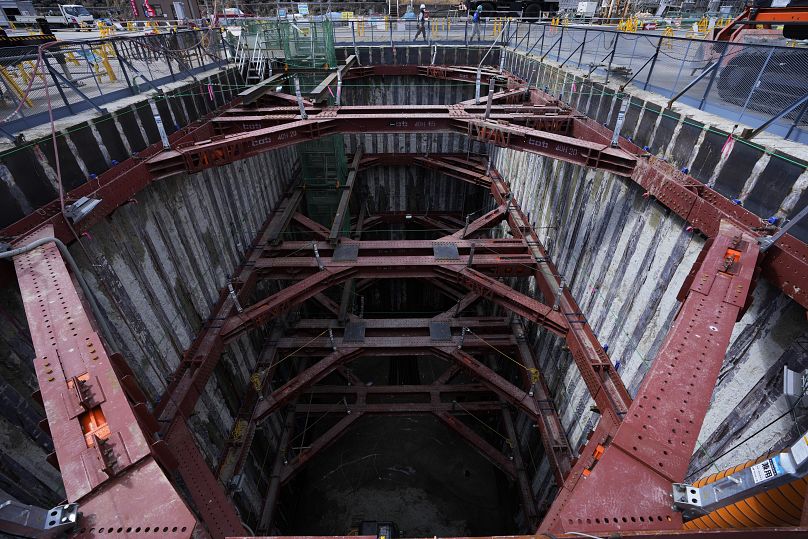Japan is seeking to reassure neighbours that there is no serious risk to fish and people, 12 years on from the nuclear disaster.
Japan plans to release Fukushima nuclear plant’s wastewater into the sea next year, 12 years on from the disaster.
The country’s nuclear regulator today approved plans by the site’s operator to release the treated radioactive water in 2023, saying the environmental risks are minimal.
It’s the next major stage of the ongoing plant cleanup and decommission, which got the green light from the government last year.
A massive earthquake and tsunami in 2011 destroyed the Fukushima plant’s cooling systems, causing the meltdown of three reactors and the release of large amounts of radiation.
Water that has been used to cool the three damaged reactor cores, which remain highly radioactive, has since leaked but was collected and stored in tanks.
Can nuclear wastewater be made safe?
There is still concern in the community and neighbouring countries about the potential health hazards of the release of the wastewater that includes tritium - a byproduct of nuclear power production and a possible carcinogen at high levels.
The Tokyo Electric Power Company (TEPCO) says more than 60 isotopes selected for treatment can be lowered to meet safety standards, except for tritium, but that it is safe if diluted.
However scientists warn the impact of long term low-dose exposure to the environment and humans are unknown, and that tritium can have a bigger impact on humans when consumed in fish than in water.
Japan nuclear authority chairman Toyoshi Fuketa said that the plan is made conservatively so the radiation impact on the environment could be still below the legal limit in case of any thinkable risks.
The green light was given just as the International Atomic Energy Agency (IAEA)'s Director Mariano Grossi arrived in Japan for meetings with top officials to discuss the plan, which has received international attention.
Japan has sought the IAEA’s assistance to ensure the water release meets international safety standards, and to reassure local fishing and other communities as well as neighbouring countries that have sharply criticised the plan.
A team of agency experts from the agency visited the plant in February and March for meetings with Japanese government and TEPCO officials.
The task force, in a report issued late April, said Japan is making “significant progress” on the plan and taking appropriate steps toward the planned discharge.
How will Fukushima’s nuclear wastewater be disposed of?
The contaminated water is currently being stored in about 1,000 tanks at the damaged plant, which officials say must be removed so that facilities can be built for its decommissioning.
Under the plan, TEPCO will transport water that has been treated to below releasable levels through a pipeline from the tanks to a coastal facility, where the water is diluted with seawater.
From there, the water will enter an undersea tunnel to be discharged at a point about 1 kilometre (0.6 miles) from the plant to ensure safety and minimise the impact on local fishing and the environment, according to TEPCO.
The plan will become official after a 30-day public review, a formality that is not expected to overturn the approval.
If it goes ahead, the government and TEPCO will begin gradually releasing the treated water in spring 2023.












